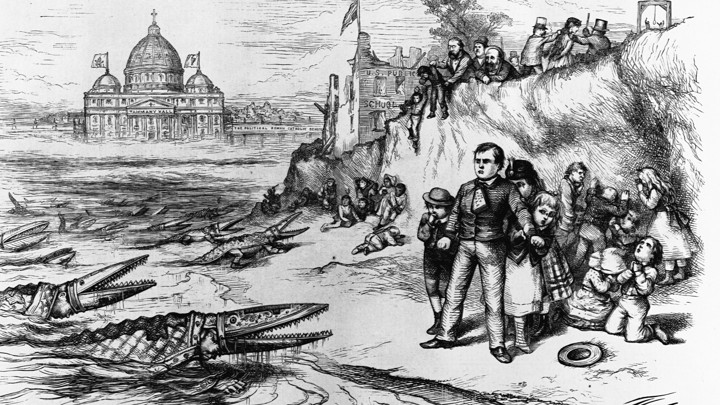
The Atlantic. January 12, 2020
Later this month, the U.S. Supreme Court will hear one of the most significant education cases in decades: Espinoza v. Montana Department of Revenue. Centering around a modest tax-credit scholarship program in Montana, Espinoza could have major ramifications for educational-choice programs across America, which help nearly half a million students attend private schools.
In deciding Espinoza, the Court has the opportunity to do more than just settle the fate of one controversial tax credit; it could also junk Montana’s Blaine Amendment, finding it in violation of the Constitution’s religious-freedom and equal-protection clauses. In doing so, it would set a strong precedent against any law born of bigotry, even if other justifications seem neutral.
The Espinoza case dates back to 2015, when, shortly after state lawmakers enacted the tax-credit scholarship program, the Montana Department of Revenue devised a rule that banned families from using the scholarships to attend religious schools, which account for more than two-thirds of the state’s private schools. The case is brought by three Montana moms whose children are thriving at a private religious school; without the tax-credit scholarships, the families are struggling to pay tuition. (Litigating on behalf of the parents is the Institute for Justice, where I work, though I’m not directly involved with the lawsuit.)
In May 2017, a trial court ruled in their favor and struck down the Department of Revenue’s rule. But in December 2018, the Montana Supreme Court reversed the decision, citing what is commonly known as Montana’s Blaine Amendment.
Enacted during a wave of anti-Catholic bigotry in 1889, the amendment
bans “direct or indirect” public funding for any “sectarian purpose.”
According to the majority opinion, the tax-credit scholarship program
violates the Blaine Amendment, even though it’s funded entirely through
voluntary, charitable, private donations incentivized by the state’s tax
credit. This past summer, the U.S. Supreme Court agreed to hear the
case, and it will be argued on January 22.
Today, 37 states have Blaine Amendments in their state constitution, though the precise wording varies. The amendments are named after Representative James G. Blaine of Maine, who in 1876 proposed a federal constitutional amendment that would have prohibited state funding for schools “under the control of any religious sect.” Blaine’s amendment passed the U.S. House of Representatives but fell just short of the supermajority it needed to pass the U.S. Senate.
Even though Blaine’s amendment was never enacted nationwide, Congress later required many potential states to adopt a version of the amendment in order to be admitted to the union. Starting with the Enabling Act of 1889, Congress granted statehood to Montana, North Dakota, South Dakota, and Washington only after their state constitutions guaranteed that their public schools would be “free from sectarian control.” Senator Henry Blair of New Hampshire, who regularly reintroduced the Blaine Amendment in subsequent sessions, called this provision of the Enabling Act “the very essence” of his proposal, and praised Congress for setting a “great precedent.”
At first glance, Blaine Amendments may seem like a benign way to ensure the government’s neutrality toward religion. In the 1875 speech that inspired Representative Blaine, President Ulysses S. Grant called for a federal ban on government funding for “sectarian schools” in order to “keep the Church and state forever separate.” More recently, nine states with Blaine Amendments collectively filed an amicus brief in the Espinoza case, arguing that no-aid provisions like theirs and Montana’s merely “sought to solidify the Framers’ original design separating church and State.”
But Blaine Amendments weren’t truly devoted to the separation of Church and state. Instead, they were mainly focused on separating the Catholic Church and state. Although public schools are largely secular today, that wasn’t the case in the 19th century. Public or “common” schools typically instilled in their students a nondenominational form of Protestantism, requiring them to sing hymns, pray, and read from the King James Bible—in direct conflict with Catholic dogma.
Refusing to send their children to schools that clashed with their values, many Catholic families (often immigrants) created their own private, religiously affiliated school systems. In turn, those parochial schools quickly became a target for bigoted attacks, most infamously by the Know Nothing party, and later by the American Protective Association. The association was particularly powerful in Montana: At the APA’s peak, up to one-tenth of Montana residents were members. The fact that Blaine Amendments featured so prominently in the platforms of those groups clearly shows that prejudice was a motivating factor behind state Blaine Amendments. More
No comments:
Post a Comment